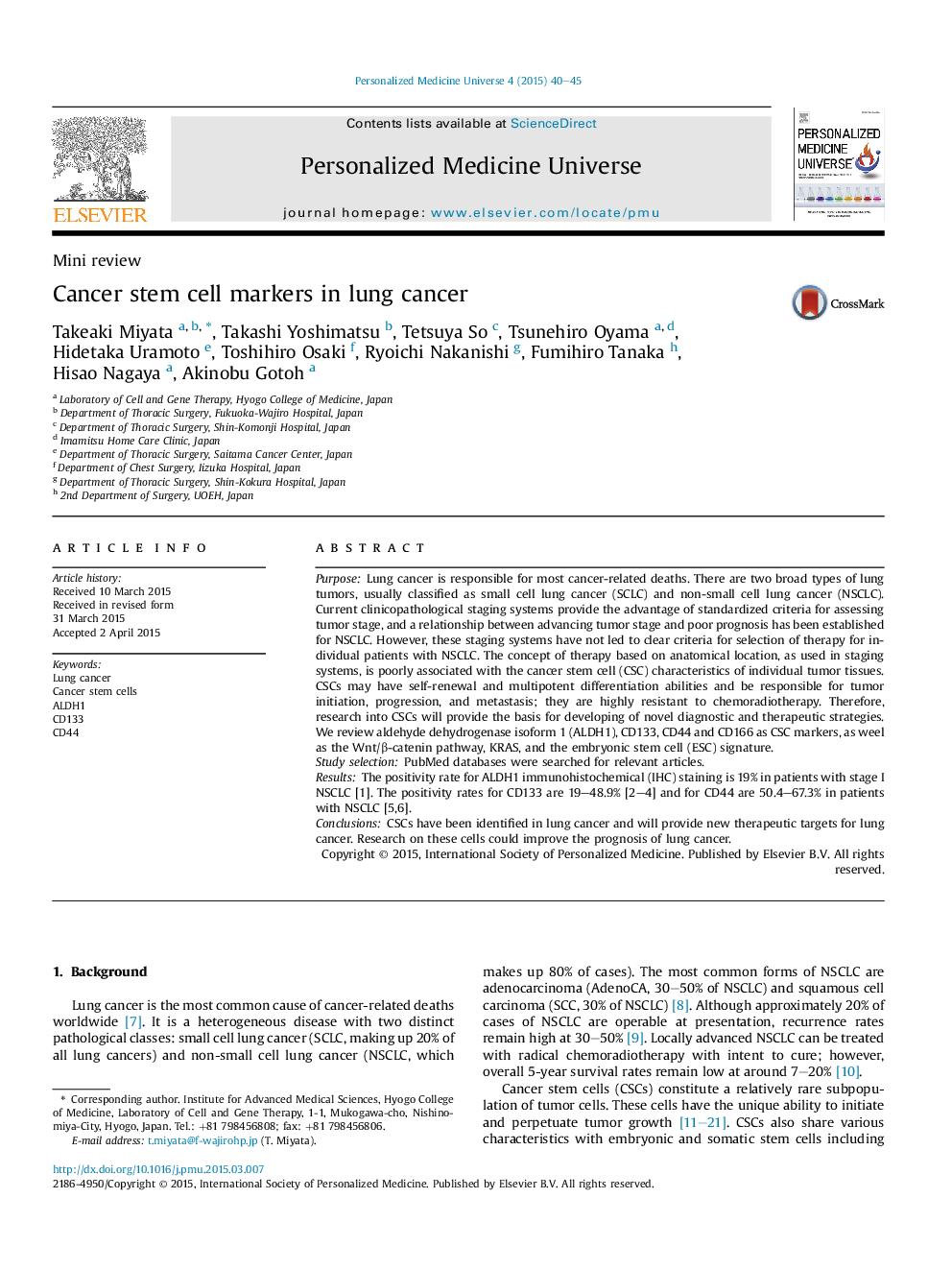| Article ID | Journal | Published Year | Pages | File Type |
|---|---|---|---|---|
| 3382620 | Personalized Medicine Universe | 2015 | 6 Pages |
PurposeLung cancer is responsible for most cancer-related deaths. There are two broad types of lung tumors, usually classified as small cell lung cancer (SCLC) and non-small cell lung cancer (NSCLC). Current clinicopathological staging systems provide the advantage of standardized criteria for assessing tumor stage, and a relationship between advancing tumor stage and poor prognosis has been established for NSCLC. However, these staging systems have not led to clear criteria for selection of therapy for individual patients with NSCLC. The concept of therapy based on anatomical location, as used in staging systems, is poorly associated with the cancer stem cell (CSC) characteristics of individual tumor tissues. CSCs may have self-renewal and multipotent differentiation abilities and be responsible for tumor initiation, progression, and metastasis; they are highly resistant to chemoradiotherapy. Therefore, research into CSCs will provide the basis for developing of novel diagnostic and therapeutic strategies. We review aldehyde dehydrogenase isoform 1 (ALDH1), CD133, CD44 and CD166 as CSC markers, as weel as the Wnt/β-catenin pathway, KRAS, and the embryonic stem cell (ESC) signature.Study selectionPubMed databases were searched for relevant articles.ResultsThe positivity rate for ALDH1 immunohistochemical (IHC) staining is 19% in patients with stage I NSCLC [1]. The positivity rates for CD133 are 19–48.9% [2–4] and for CD44 are 50.4–67.3% in patients with NSCLC [5,6].ConclusionsCSCs have been identified in lung cancer and will provide new therapeutic targets for lung cancer. Research on these cells could improve the prognosis of lung cancer.
